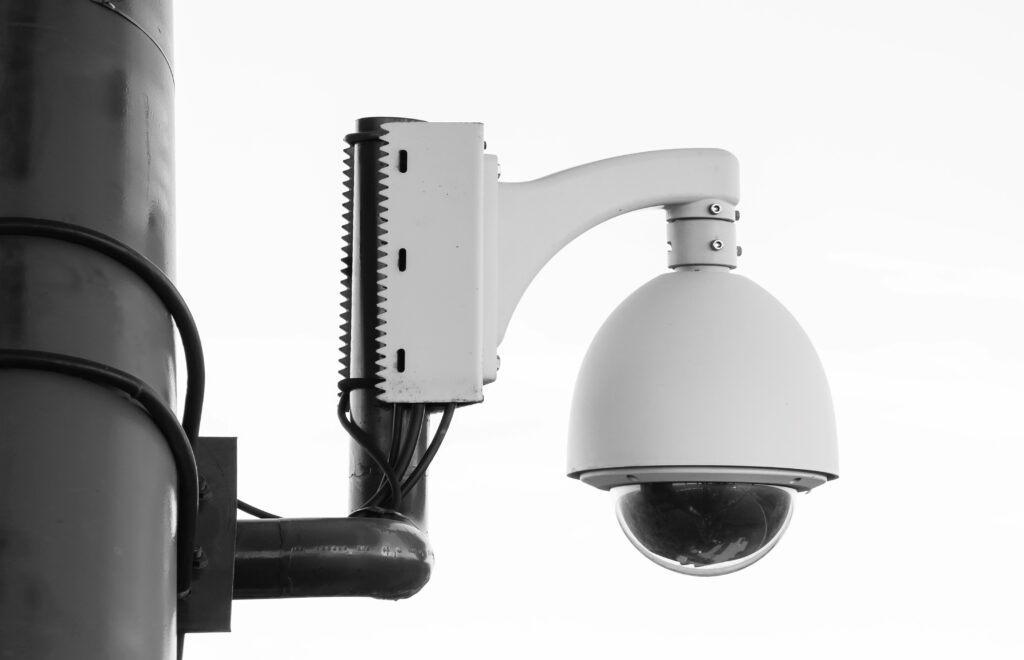Small and medium-sized enterprises (SMEs) face increasing challenges related to cybersecurity. Cybercriminals often view SMEs as an attractive target due to their limited resources and often less sophisticated cybersecurity defences compared to larger corporations. As a result, SMEs must adopt a proactive approach toward cybersecurity risk management to protect their assets, reputation, and bottom line.
The Current Cybersecurity Landscape for SMEs
The global cybersecurity landscape has evolved rapidly over the past decade, with cyber threats becoming more sophisticated and pervasive. SMEs, in particular, have seen a significant increase in cybersecurity attacks as cybercriminals recognise that these businesses may not have the same level of protection against attacks as larger enterprises. According to recent statistics, 43% of cyberattacks target small businesses, highlighting the need for robust cybersecurity strategies.
In the UAE and globally, the impact of cybersecurity breaches on SMEs can be devastating. A cybersecurity attack can lead to severe financial loss, damage to the company’s reputation, loss of customer trust, and in some cases, the closure of the business. For example, studies show that 60% of small businesses that experience a cyberattack close their doors within six months due to the significant financial and operational impact.
Given these alarming statistics, it’s clear that SMEs must be vigilant in identifying and mitigating potential security threats. This blog will explore the most common cybersecurity risks facing SMEs and offer practical tips to help business owners protect their companies.
Top Cybersecurity Risks Facing Small Businesses
Ransomware Attacks
Ransomware attacks are one of the most destructive types of attacks that can hit an SME. In a ransomware attack, malicious software (malware) encrypts a company’s data, rendering it inaccessible until a ransom is paid to the attacker. Even if the ransom is paid, there’s no guarantee that the data will be restored, or that it hasn’t been compromised.
Real-life example – A small logistics company in the UAE experienced a ransomware attack that resulted in a week of operational downtime, costing the company thousands of dirhams in lost revenue. The company’s lack of a comprehensive incident response plan exacerbated the situation, as they were unprepared to handle the attack quickly.
Prevention Tips:
- Regularly back up all critical data and ensure backups are stored in a secure, off-site location.
- Use multi-factor authentication (MFA) to add an extra layer of security to access company accounts.
- Train employees on recognising phishing emails and other common vectors used to deliver ransomware.
- Implement endpoint security solutions to detect and prevent ransomware before it can execute.
Phishing Scams
Phishing attacks are a common threat that SMEs face, where cybercriminals use deceptive emails, messages, or websites to trick employees into providing sensitive information or downloading malicious software. Phishing attacks often appear legitimate, making them difficult to detect.
An example of a phishing attack could be: An SME who received a phishing email that appeared to be from a trusted supplier. An employee clicked on a link in the email, which led to unauthorised access to the company’s network and a subsequent security breach.
Prevention Tips:
- Educate employees on how to identify phishing emails, such as checking for suspicious sender addresses, looking out for urgent or threatening language, and avoiding clicking on unexpected links or attachments.
- Use email filtering and security software to reduce the risk of phishing emails reaching employees.
- Encourage the use of a password manager to create and store strong passwords securely.
- Implement multi-factor authentication (MFA) for all employee access to sensitive systems.
Malware and Viruses
Malware and viruses remain a significant cybersecurity threat to SMEs. This category of malicious software includes Worms, Trojans, and other harmful programs designed to damage or disable computers, steal data, or gain unauthorised access to networks.
An example of a malware attack involved a small retail business that unknowingly downloaded a Trojan horse disguised as legitimate software. This led to unauthorised access to the company’s financial records, resulting in significant financial losses and a costly cleanup process.
Prevention Tips:
- Keep all software and systems up to date with the latest security patches to reduce vulnerabilities.
- Use reputable antivirus software to detect and remove malware before it can cause harm.
- Restrict employee access to company networks based on their roles and responsibilities to limit the spread of malware.
- Educate employees on the dangers of downloading software or files from untrusted sources.
Weak Passwords
Weak passwords are a common vulnerability that cybercriminals exploit to gain unauthorised access to company accounts and systems. Password-related breaches are among the most common types of cybersecurity incidents, as many employees use easily guessable passwords or reuse the same password across multiple accounts.
Statistics indicate that 81% of data breaches are due to weak passwords, highlighting the need for SMEs to enforce strong password policies.
Best Practices for Password Management:
- Implement a password policy that requires employees to use strong, unique passwords for each account.
- Use a password manager to generate and store complex passwords securely.
- Regularly update passwords and avoid using the same password for multiple accounts.
- Implement multi-factor authentication (MFA) wherever possible to provide an additional layer of security.
Unsecured Networks
Unsecured networks pose significant risks to SMEs, especially with the rise of remote work and mobile device usage. Cybercriminals can exploit vulnerabilities in unsecured networks to intercept data, gain unauthorised access, or launch attacks on company systems.
For example, a small consultancy firm in Dubai faced a security breach after an employee accessed company data over an unsecured public Wi-Fi network. The attacker was able to intercept sensitive information, leading to a data breach.
Tips for Securing Business Networks:
- Ensure that all company networks, including Wi-Fi, are secured with strong encryption protocols, such as WPA3.
- Implement network security measures, such as firewalls and intrusion detection systems, to monitor and protect against potential threats.
- Educate employees on the risks of using unsecured networks and encourage the use of virtual private networks (VPNs) for secure remote access.
- Regularly review and update network security configurations to address new threats.
DDoS Attacks
DDoS (Distributed Denial of Service) attacks are a significant cybersecurity threat where an attacker overwhelms a network, service, or server with excessive traffic, causing it to slow down or crash. For SMEs, the impact of a DDoS attack can be severe, resulting in prolonged operational downtime, loss of revenue, and damage to the company’s reputation.
DDoS attacks can be particularly challenging for small businesses that may lack the infrastructure to absorb and mitigate large volumes of traffic. Unlike larger corporations that have dedicated resources to deal with such threats, SMEs are often more vulnerable and may suffer significant disruptions to business operations.
Prevention Tips:
- Implement Network Security Measures: Use firewalls, intrusion detection systems, and DDoS mitigation services to monitor and manage traffic, blocking malicious traffic before it overwhelms the system.
- Work with a DDoS Protection Service: Consider partnering with a third-party service provider that specialises in DDoS protection, offering real-time monitoring and automatic traffic filtering to mitigate attacks.
- Have a Contingency Plan: Include DDoS response protocols in your overall cybersecurity strategy and disaster recovery plan to minimise downtime and restore normal operations quickly.
Emerging Cybersecurity Threats for SMEs
IoT Vulnerabilities
The Internet of Things (IoT) has brought tremendous benefits to businesses by enabling interconnected devices to share data and improve efficiency. However, IoT devices also present new cybersecurity risks, as they often have weaker security measures and can be exploited by attackers to gain access to larger networks.
SMEs using IoT devices, such as smart cameras, sensors, or connected machinery, must be aware of the potential vulnerabilities. For example, an IoT device with weak security settings could be compromised and used as a gateway for a broader cyberattack on the company’s network.
Protection Strategies:
- Regularly update the firmware and software of all IoT devices to patch vulnerabilities.
- Segment IoT devices on a separate network to limit access to critical systems.
- Use strong, unique passwords for each IoT device and disable default login credentials.
- Monitor IoT devices for unusual activity that could indicate a security breach.
Supply Chain Attacks
Supply chain attacks are becoming increasingly common, where cybercriminals target a company’s suppliers or service providers to gain access to their systems. SMEs are particularly vulnerable to supply chain attacks because they often rely on third-party vendors for critical business functions, such as software development, cloud services, and logistics.
An example could be, an SME in the manufacturing sector experiencing a supply chain attack when a trusted vendor’s software update was compromised with malware. This would have allowed the attacker to gain access to the SME’s internal systems, leading to a significant security breach.
How SMEs Can Protect Their Supply Chain:
- Conduct thorough due diligence when selecting third-party vendors and ensure they follow strong cybersecurity practices.
- Regularly review and monitor the security measures of existing suppliers and partners.
- Implement multi-factor authentication (MFA) for vendor access to sensitive systems.
- Develop a comprehensive incident response planning process that includes potential supply chain disruptions.
Using AI Tools in a Workplace Setting
Artificial intelligence (AI) tools are increasingly being adopted by SMEs to enhance productivity, automate tasks, and gain valuable insights from data. However, the use of AI also presents potential risks, particularly related to data privacy, compliance, and the potential for biased decision-making.
For example, AI tools that analyse employee data could inadvertently expose sensitive information if not properly secured. Additionally, AI systems that rely on large datasets may be vulnerable to manipulation, leading to inaccurate outcomes.
Potential Risks and Protection Strategies:
- Ensure that AI tools are compliant with data protection regulations and privacy laws.
- Implement strong access controls and encryption to protect data processed by AI systems.
- Regularly review and audit AI systems to identify and address potential biases or inaccuracies.
- Educate employees on the ethical use of AI and the importance of data privacy in AI-driven processes.
How Small Businesses Can Protect Themselves
Given the diverse range of cybersecurity threats facing SMEs, business owners must take proactive steps to protect their companies. Here are some key strategies:
- Develop a Comprehensive Cybersecurity Strategy: A well-defined cybersecurity strategy should include regular risk assessments, employee training, incident response planning, and the implementation of strong security measures, such as endpoint security and network monitoring.
- Invest in Cybersecurity Expertise: SMEs should consider partnering with a cybersecurity service provider to gain access to expertise and resources that may not be available in-house. These providers can help implement robust security measures and provide ongoing support to protect against emerging threats.
- Implement Multi-Factor Authentication (MFA): MFA is a simple yet effective way to add an extra layer of security to access to company accounts and critical systems, reducing the risk of unauthorised access.
- Regularly Back Up Data: Regular data backups are essential for protecting against ransomware attacks and other types of data loss. Ensure that backups are stored securely and can be quickly restored in the event of an incident.
- Educate Employees: Employees are often the weakest link in cybersecurity. Regular training on recognising common threats, such as phishing attacks, and the importance of strong password management can significantly reduce the risk of a security breach.
- Implement Network Security Measures: Secure all company networks, including Wi-Fi, with strong encryption and regularly update network security configurations to protect against potential threats.
- Regularly Update Software and Systems: Keeping software and systems up to date with the latest security patches is essential for protecting against malware attacks and other vulnerabilities.
To further explore how your SME can enhance its cybersecurity defences, check out our detailed cybersecurity tips article on Cybersecurity Tips for Small and Medium Companies or visit our Cybersecurity Services page.
At Kew Solutions, we specialise in providing tailored cybersecurity services for SMEs, helping businesses in Dubai and beyond protect against cyber threats and ensure long-term resilience.
Conclusion
Cybersecurity is a critical concern for SMEs in today’s digital age. The increasing frequency and sophistication of cyber threats, coupled with the potentially devastating impact of a security breach, make it essential for small businesses to take proactive steps to protect themselves.
By understanding the most common cybersecurity risks and implementing a robust cybersecurity strategy, SMEs can significantly reduce their exposure to potential threats. Partnering with a cybersecurity service provider like Kew Solutions can provide the expertise and support needed to safeguard your business against current and emerging cybersecurity risks.
Remember, the cost of downtime, financial loss, and reputational damage resulting from a cyberattack can far outweigh the investment in a comprehensive cybersecurity strategy. Don’t wait until it’s too late—take action to protect your business from the growing threat of cybercrime!









